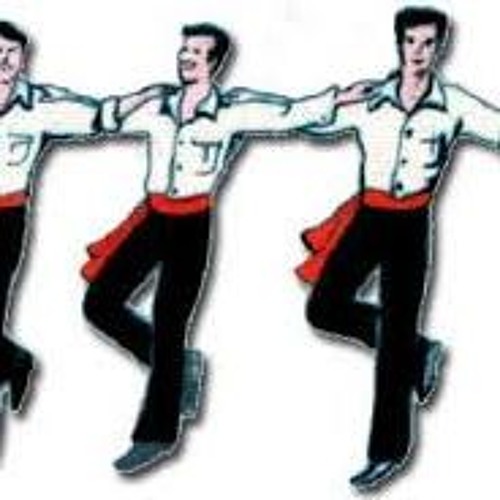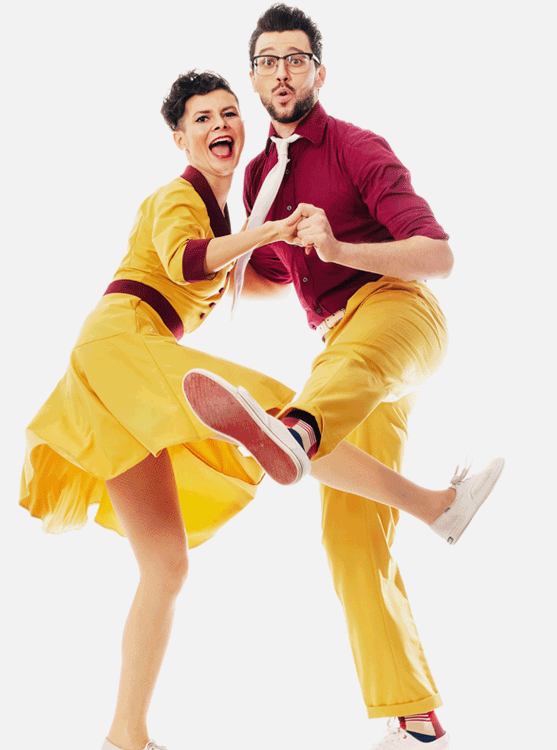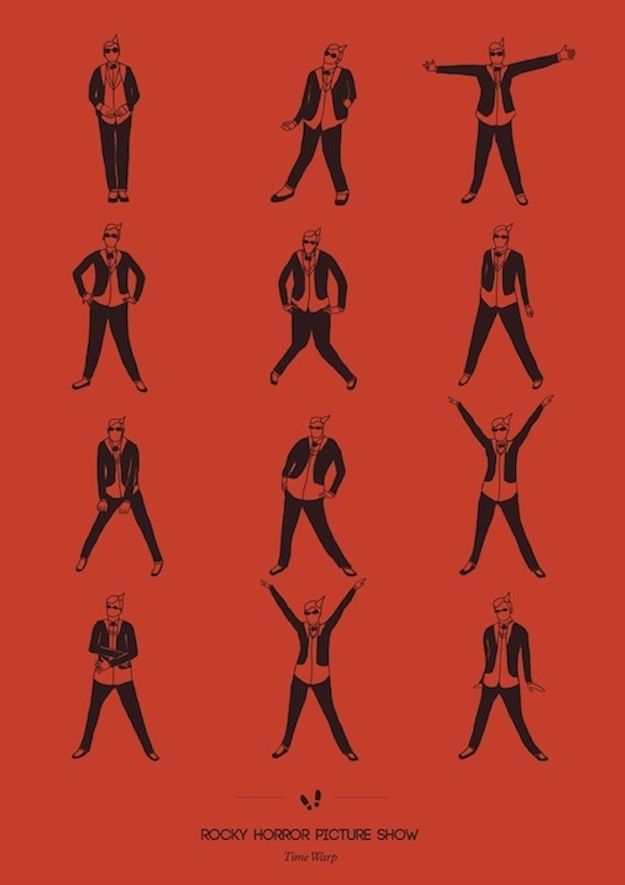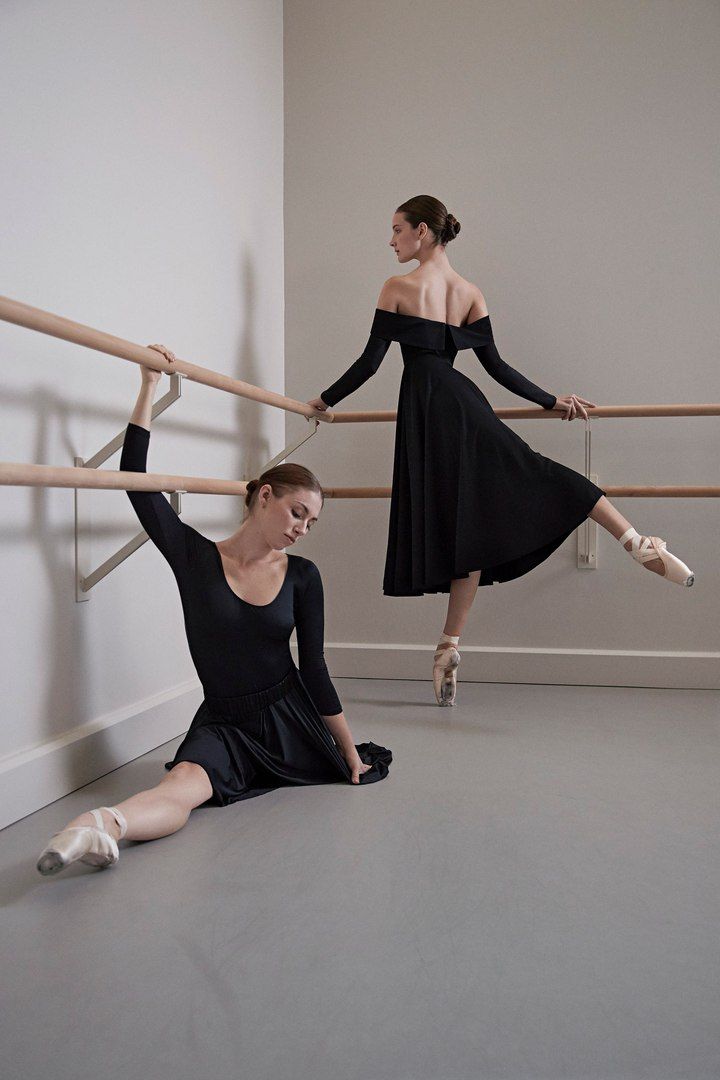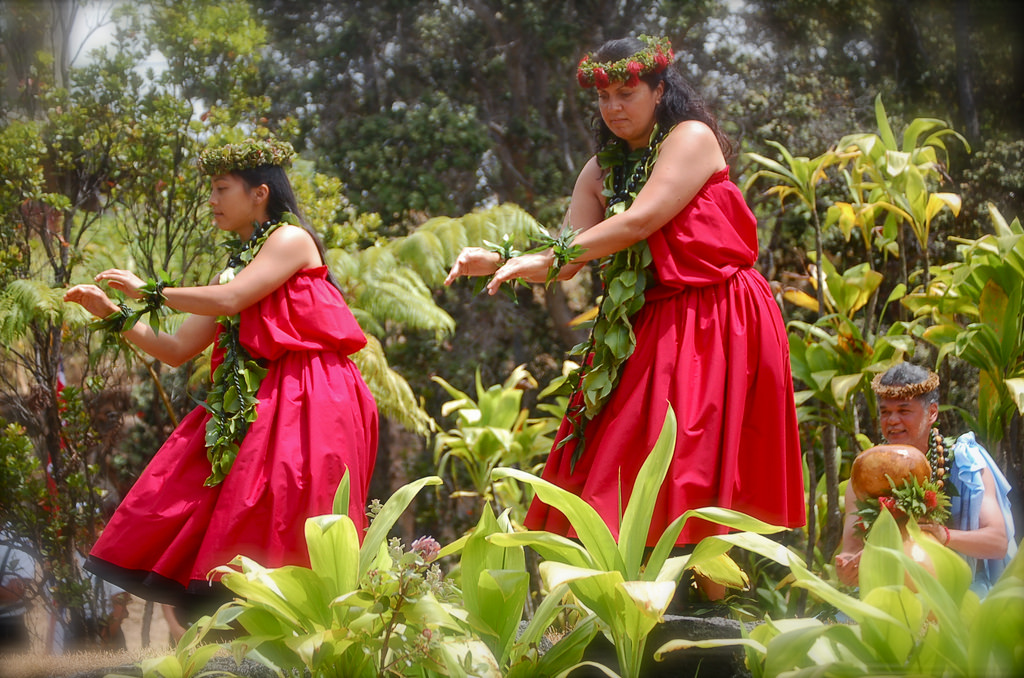How to dance sirtaki steps
Syrtaki (2*), Zorba’s dance – seuGreek – Folkdance Footnotes
*2nd Generation dance. A dance that developed and was disseminated in a non-traditional way. 2G dances are specific – have a fixed format designed to correspond with the arrangement of a particular recording., whereas 1G dances are generic – have a shorter sequence that works with live music – where many different songs are played and arrangements vary according to the tastes of musicians and dancers. For more on the differences between 1st & 2nd G dances click here.
Syrtaki is a media invention. When Anthony Quinn taught Alan Bates to dance in Zorba the Greek, he was performing a combination Vari Hasapiko and fast Hasapiko, choreographed by Giorgios Provias, to match the musical score written by Mikis Theodorakis. Starting slow and building up to a frenetic climax, it was a triumphant way to end a movie. Quinn had learned a more difficult dance, but sprained his ankle before shooting, so the final product is hardly a Greek dance at all.
When non-Greeks saw it, they thought it was a real Greek dance and soon tourists were demanding to be taught ‘Zorba’s Dance’. Since no such dance existed, everyone was free to do anything vaguely Greek that started slow and ended fast. Google ‘Zorba’ and ‘dance’ and look at the variations.
Someone started calling the dance Syrtaki, which means “little syrto” – a catchy name, even though the dance has nothing to do with a traditional Greek Syrto. It did however give the impression that Syrtaki was a real Greek dance, not just something from a movie.
If you want to dance a Syrtaki there are many printed dance notes you can learn.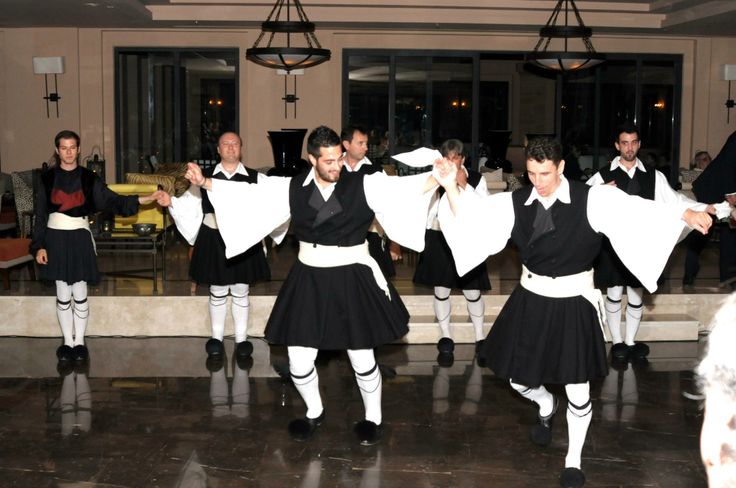 A better use of energy would be to learn Vari Hasapiko, Hassaposerviko, and fast Hasapiko. Then, instead of trying to perform someone else’s choreography, do what Zorba would do and dance as the spirit moves you!
A better use of energy would be to learn Vari Hasapiko, Hassaposerviko, and fast Hasapiko. Then, instead of trying to perform someone else’s choreography, do what Zorba would do and dance as the spirit moves you!
Start slow, doing variations on Vari Hasapiko, including the basic step if you can. Sometimes the music gradually increases to a tempo suitable for Hassaposerviko. Sometimes it jumps abruptly to fast Hasapiko speed. Sometimes it even slows and speeds several times. Have fun with it. More than any other dance, with Syrtaki there is no right way or wrong way.
Like this:
Like Loading...
The Most Famous Greek Dances (video)
1. Sirtaki
Sirtaki (also called syrtaki) is arguably the most famous Greek dance to the non-Greeks. It owes its reputation to the movie “Zorba the Greek” (1964) with Anthony Quinn. The eminent Greek composer Mikis Theodorakis created this dance by alternating slow and fast steps of two famous Greek dances, Hasapiko and Hasaposerviko. Thus, Sirtaki was born and took its baby steps on the big screen! The rest is history… Today, it is one of the most famous and fun Greek folk dances, raising the spirits every time. To dance it, place your arms on your neighbors’ shoulders and form a line or a circle.
2. Ikariotikos
Definitely one of the most beloved dances in Greece, Ikariotikos is a very exciting and fun dance. It is part of the “Nisiotika”, the dances that come from the Greek islands (‘nisi’ means ‘island’ in Greek), and specifically from the island of Ikaria. The dance has three different stages. It starts with a slow pace, then moves to the second stage where the pace quickens. Finally, in the third stage, the pace becomes even faster and everyone needs to move in complete synchrony in order to manage the dance. The faster the pace, the more fun it is, so it is not surprising that this is one of the most famous Greek traditional dances. It is performed in a line or a circle and the dances hold hands at shoulder height.
Greek Dance Lesson in Athens
3.
 Kalamatianos
KalamatianosAnother very popular folk dance in Greece. It derives its name from Kalamata, the city of the Peloponnese peninsula. Nevertheless, it is well-known all over Greece and is established as a Pan-Hellenic traditional dance. Kalamatianos dance is also performed in a line or a circle, with dancers holding hands. Its roots can be traced in Greek antiquity, all the way back to Homer!
4. Hasapiko
Mikis’ inspiration for creating the Sirtaki. Hasapiko is a traditional Greek dance that has its roots in the city of Constantinople. Its history goes all the way back to the Middle Ages when butchers performed battle dances with swords. Thus, the name of the dance (‘hasapis’ means ‘butcher’ in Greek). Just like the Sirtaki, Hasapiko is performed in a line or a circle, with the dancers placing their arms on their neighbors’ shoulders. Hasapiko progresses from a slow to a faster pace. The faster-paced version is called Hasaposerviko.
Hasapiko progresses from a slow to a faster pace. The faster-paced version is called Hasaposerviko.
Hint! Are you visiting Greece and Athens soon? Take the opportunity and enjoy a Greek dance lesson at the heart of the city, from a qualified teacher! Dance your heart out and learn all about the spirit of the Greek dances by experiencing it yourself.
5. Tsamiko
This Greek fold dance has been characterized as Pan-Hellenic, although it isn’t popular in the Greek islands. Its roots are traced in the movement of the ‘Klefths’ during the Greek Revolution in the early 19th century. The Klefths were anti-Ottoman, warlike mountain-folk who lived in the countryside when Greece was a part of the Ottoman Empire. Originally, only men performed this dance. Today, women join as well. When this happens, it usually includes a ‘double banister’, with men dancing in the outer circle and women in the inner. Alternatively, there is one circle with one male dancer followed by a female and so on. Tsamiko can be danced by the whole group (that is, everyone performs the same steps-movements) but also individually, where the first dancer does a solo, improvising and expressing himself.
Today, women join as well. When this happens, it usually includes a ‘double banister’, with men dancing in the outer circle and women in the inner. Alternatively, there is one circle with one male dancer followed by a female and so on. Tsamiko can be danced by the whole group (that is, everyone performs the same steps-movements) but also individually, where the first dancer does a solo, improvising and expressing himself.
6. Pentozali
The Pentozali is a very enthusiastic, war dance. It is the dance of revolution. Directly connected with the history of Crete and its people's liberation fight. Nothing in this dance is accidental. Every part (from the music to every step of the dance) is symbolic of their fight for freedom. It is danced in a line, with the lead dancer performing various moves, while the other dancers follow with the basic steps.
7. Sousta
Another Cretan dance, Sousta is another very famous traditional Greek dance, now being performed all over Greece. It is a love dance, with the man and woman dancing facing each other. First, the dance begins in a circle with a hand grip from the palms and the elbows bent. Then, the circle begins to dissolve and the two opposite scales come face to face. Sousta seems to be the ancient dance that was called "Pyrrhichios" but with the entry of women into the dance, its nature changed and from warlike it became purely erotic. The dance consists of small steps that are done on the spot or moving slightly forward, backward, right and left, with the addition of side steps and other variations. Two good dancers can easily perform a love story from the beginning to the end.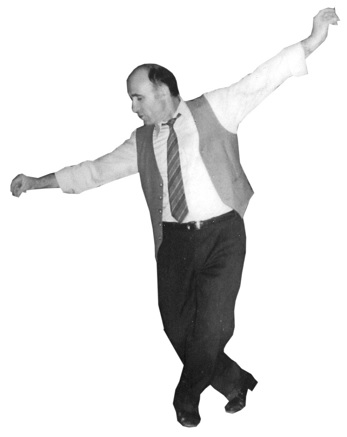
8. Zeibekiko
This is a dance completely different from the above. This is performed by one dancer at a time and it does not exactly have specific steps to follow. It is a free dance and it depends on the character of each dancer. Improvisation is a valuable skill here and, although slow in pace, it has a strong intensity. It used to be a dance for men only but today everyone can dance to it. Each dancer has his own figures with which he expresses himself. Also, each dancer dances to only one song, only once. Many times it is his own, specific song and not a random one. Traditionally (and this remains a strong custom in some areas of Greece even today), when someone is dancing no one else is allowed to interrupt or disturb him, or dance with him in the same place.
Greek Dance Lesson in Athens
Hint! If you are visiting Athens any time soon, book a Greek dance lesson and learn how to dance some of the above Greek dances.
About the author: Our team at Greek TravelTellers consists of academics and lovers of Greek culture. Our vision is to convey our knowledge and Greek values through unique tours and experiences. Through our blog, we hope to bring Greek history and culture closer to you. Feel free to learn more about us.
Encyclopedia of dance: Sirtaki
The most important are Greek dances that originated on the islands (nisyotika). Each of them has not only their own movements. It has a whole story and deep meaning. The same can be said about the most famous dance in Greece - sirtaki, which has become a symbol of the country. What is "sirtaki"? Where did this word come from?
What is "sirtaki"? Where did this word come from?
Sirtaki as a term in art
This word came to us from Greece as the name of the national group Greek dance. In Greek, the word means "to touch". The dance is characterized by a gradual increase in tempo from slow and calm to very moving. This is the hallmark of Greek culture.
The history of the Sirtaki dance
Many mistakenly classify the Sirtaki dance as an ancient folk dance. However, you will be surprised to learn that this dance is not at all folk, but quite authorial. And its author is movie actor Anthony Quinn.
The second surprise for you will be that this dance is not originally Greek at all, but American, since Quinn is not a Greek, but an American, filmed in 1964 by the Greek director Michallis Kakkoyannis. True, the film dealt with the Greek theme. And the actor had to perform a Greek folk dance by the sea. But Quinn broke his leg, and it was not only difficult for him to dance a fast Greek dance - it was impossible.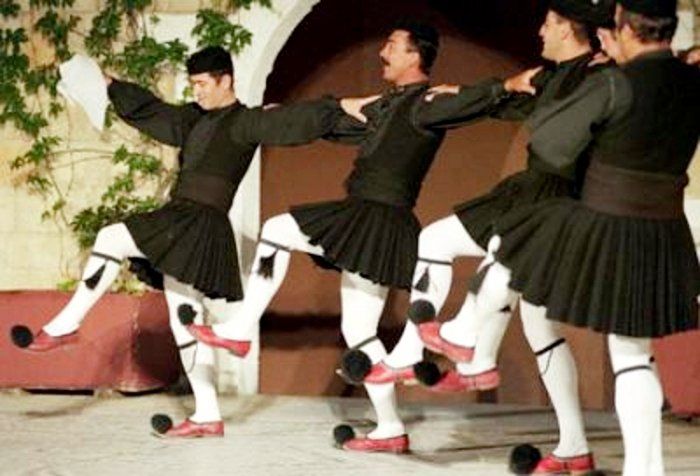 So he came up with a new dance based on the simple rhythmic movements of Greek folk dances in his slow version. The film was filmed for a long time. During filming, Quinn's leg healed. And he was already able to perform the second part of the dance quickly. The music for the sirtaki Kuina dance was also written specifically in connection with the need. It was written for Zorba the Greek by the Greek composer Mikis Theodorakis.
So he came up with a new dance based on the simple rhythmic movements of Greek folk dances in his slow version. The film was filmed for a long time. During filming, Quinn's leg healed. And he was already able to perform the second part of the dance quickly. The music for the sirtaki Kuina dance was also written specifically in connection with the need. It was written for Zorba the Greek by the Greek composer Mikis Theodorakis.
What about the director, didn't he know that such a dance didn't exist? Apparently, Kakkoyannis was very trusting, as he believed the arguments of the actor, who said that local residents told him about this dance. Didn't he double-check with them what sirtaki is, is there really such a dance in the culture of the Greek people? It is possible that we will never find the answer to this question.
By the way, about the name of the dance. And it is attributed to Quinn's fantasy: supposedly this is a "small" (reduced) version of the traditional Cretan dance sirtos.
Sirtaki: performance technique
Most often, the sirtaki dance is performed by a group of people standing in one line and holding outstretched hands on the shoulders of their neighbors. It happens that part of the dance is performed in a circle, but, as a rule, this is an exception. In the case of participation in the dance of a large number of people, the dancers are arranged in several lines. The dance is performed only with the feet, while the bodies and arms of the dancing sirtaki remain motionless. With the help of a strong grip of the hands, the dancers maintain the line of dance. The rhythm of the dance is clear, in four quarters, and with a fast one - in two quarters. The legs perform movements absolutely synchronously: the traditional zigzag cross step, side steps, squats and half squats, lunges. If we analyze the features of the movements used in the dance, the Greeks noticed that in the first part of the sirtaki dance, the traditional movements of the Cretan folk dance group sirtos were used, and in the second - fast part - elements of another group of Cretan dances - pidikhtos, including jumps and jumps.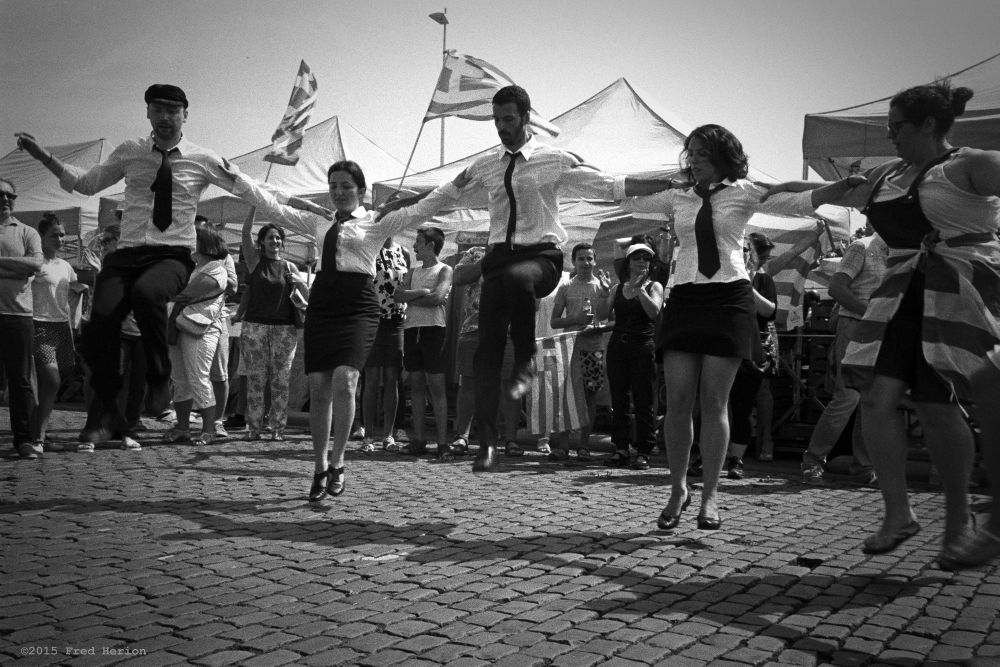
In order to hear the rhythm of the dance well during the performance, the dancing sirtaki put on special hard-soled sandals on their feet.
So, sirtaki is based on a mixture of rhythms - both fast and slow. The dancers become in one line (less often - in a circle). At the same time, the hands of each of them lie on the shoulders of their neighbors. The dance begins slowly, unhurriedly and smoothly, gradually accelerating. Movements become more and more sharp, fast, turn into jumps. In this music lies the very life, energy and youth.
Types of modern sirtaki
One of the most common sirtaki in modern Greece was born on the basis of the Athenian hasapiko dance. What do hasapiko and sirtaki have in common? First, the music. Secondly, the linear form of dance. True, both dances do not involve the arrangement of a large number of people in one line. There should be no more than three. If there are more dancers, then they line up in parallel lines. Thirdly, a whole range of movements, especially similar in the fast part of the dance. There is a version that hasapiko was previously a military dance. It was used as a pantomime to prepare for combat and to teach silent combat, such as approaching an opponent. And also conveyed the features of the battle by the Greeks. The second version of sirtaki is zorbas, which does not consist of two parts, but of three or four. All parts are characterized by a change in rhythm and tempo. In the slow part, the movements are similar to sirtaki, and in the fast part, to hasapiko. Moreover, the movements during the dance can be changed and combined by the dancers improvisationally, by transferring the “impulse” to the neighbors with their shoulders: after all, their bodies are tightly pressed against each other. There is another dance that is very reminiscent of sirtaki - naftiko. It is danced by Greek sailors, and it is very reminiscent of the Russian apple. The original dance for naftiko was the ancient folk dance Makkelarikos, from which the Hasapiko dance later grew.
Thirdly, a whole range of movements, especially similar in the fast part of the dance. There is a version that hasapiko was previously a military dance. It was used as a pantomime to prepare for combat and to teach silent combat, such as approaching an opponent. And also conveyed the features of the battle by the Greeks. The second version of sirtaki is zorbas, which does not consist of two parts, but of three or four. All parts are characterized by a change in rhythm and tempo. In the slow part, the movements are similar to sirtaki, and in the fast part, to hasapiko. Moreover, the movements during the dance can be changed and combined by the dancers improvisationally, by transferring the “impulse” to the neighbors with their shoulders: after all, their bodies are tightly pressed against each other. There is another dance that is very reminiscent of sirtaki - naftiko. It is danced by Greek sailors, and it is very reminiscent of the Russian apple. The original dance for naftiko was the ancient folk dance Makkelarikos, from which the Hasapiko dance later grew.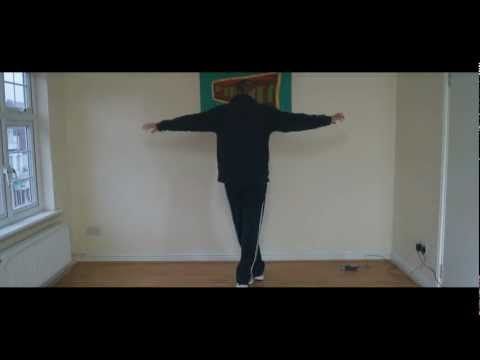
Sirtaki today
What is sirtaki for the Greeks now? Now the Greeks like this dance so much that they consider it equal to other national traditional dances and dance it with pleasure at the holidays. Photos of sirtaki are presented in the article.
When it is necessary to acquaint guests with Greek culture, it is performed in Greek national costumes. Today there are a large number of options for the execution of sirtaki. The author of the dance, Anthony Quinn, is called the Honorary Greek by the Greeks, and his dance is the dance of the Zorba. And sirtaki are danced not only in Greece, but also in many countries of the world. For example, in the USA at the end of 19In the 60s, sirtaki were performed in a number of nightclubs. And in Russia, sirtaki is one of the brightest numbers of ballet theaters and dance ensembles, for example, the Moiseev Ensemble, the Gzhel Dance Theater.
So what is Sirtaki? For some, this is an amazing phenomenon of the dance culture of the 20th century, which captured the whole world with its energy.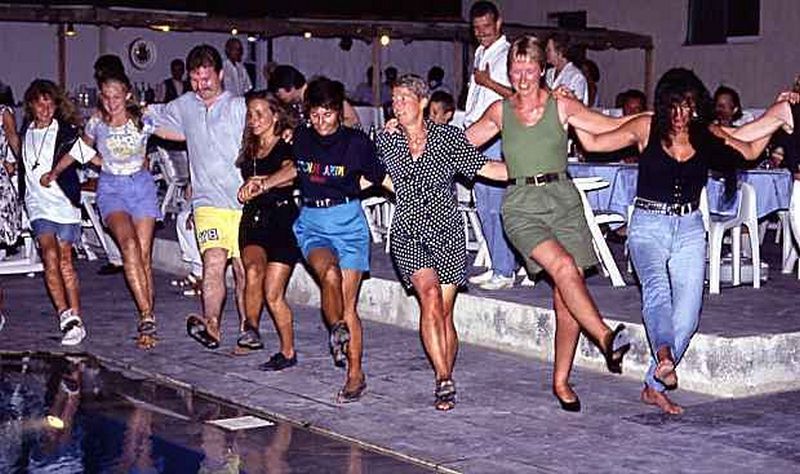 For others, it is a way of ethnic self-identification. For the third - the opportunity to find like-minded people and share with them a positive charge received from the joint detachment from the surrounding reality and absolute immersion in the rhythm of the dance, which embraces completely.
For others, it is a way of ethnic self-identification. For the third - the opportunity to find like-minded people and share with them a positive charge received from the joint detachment from the surrounding reality and absolute immersion in the rhythm of the dance, which embraces completely.
Of course, sirtaki is not the only dance in Greece. Since ancient times, original Greek dances with very original names have come down to us: Katsipadyanos, Angalyastos, Anoyanos Pidichthos, Apanomeritis, Mikraki, Rumatyani Susta and many others. Each of them has its own unique style and its own characteristics: some are characterized by improvisation and a sharp change in tempo, others by springiness and grace, and others by a slow tempo with heavy steps. At the same time, dancers can sing and even play the guitar.
symbol of Greece and the wealth of the Greek people
Sirtaki - the symbol of Greece and the wealth of the Greek people
Sirtaki is the youngest Greek dance, the history of which is worthy of a separate film. If you ask a tourist who has just returned from Greece what he remembers the most, he will certainly name this dance style. What is remarkable about it and how did it come about? Find answers to these questions in our article.
If you ask a tourist who has just returned from Greece what he remembers the most, he will certainly name this dance style. What is remarkable about it and how did it come about? Find answers to these questions in our article.
What is sirtaki. Distinctive features of the dance
This is a Greek dance that originated in the 60s of the XX century thanks to one resourceful American. But some of the origins of the style can still be traced in the ancient culture of Greece.
It is believed that this genre is based on three Greek dances.
- Hasapiko is an ancient dance of the Greek warriors. Little is known about this style. According to legend, butchers danced the hasapiko at Easter, which is why it is often called the "butcher dance". In addition, from Turkish "kasap" is translated as "meat merchant", which again confirms the origin of the direction. With sirtaki, hasapiko is related to the construction of dancers in rows, when all the dancers put their hands on each other's shoulders.
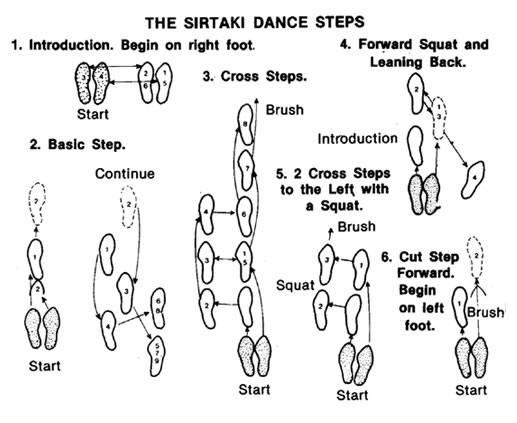
- Hasaposerviko is a quick version of hasapiko. To speed up the pace of the dance occurred to the Serbs, who came to Byzantium around IX. Their contribution to the development of the genre can be seen in the title: hasapo serviko . The rest of the dance is similar to its progenitor, hasapiko.
- Sirtos is the true folk dance of the Greeks. In the modern view, this is a whole group of styles that unites the cultures of various Greek regions. Sirtaki inherited slow pas from sirtos.
Can't wait to find out how sirtaki dance? In general terms, it looks like this:
- a group of dancers stand in a row, because sirtaki do not dance alone;
- each puts his hands on the shoulders of his neighbor, thus forming a long chain of like-minded people;
- then the music sounds and the dancers begin to perform slow figures of the dance, gradually accelerating and reaching the apotheosis;
- basic movements: smooth, sliding steps, semi-squats, sharp lunges and jumps.
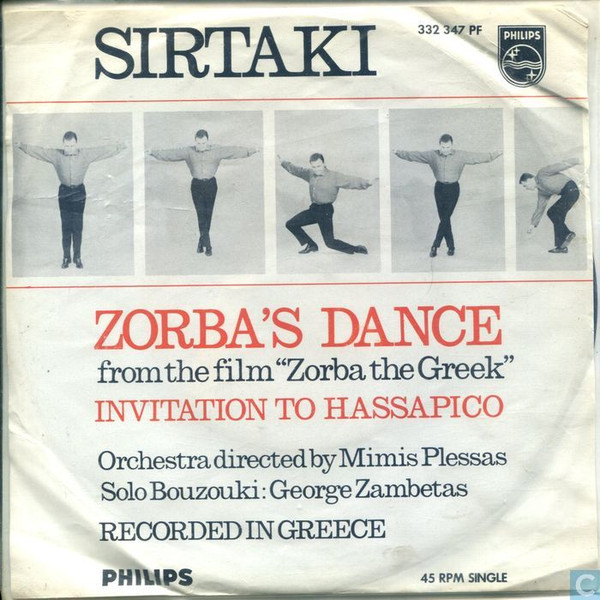 All steps are performed synchronously.
All steps are performed synchronously.
And now imagine what kind of energy is present on the dance floor when sirtaki is performed by 20 or 50 people! The pattern of the dance captures and bewitches, forcing you to admire the unity and friendship of the Greeks. But none of this would be possible without music. Let's talk about it in more detail.
Sirtaki story
“Stop! Taken!” - with these words, Michalis Kakoyannis completed work on the film "Zorba the Greek" in 1964, not suspecting what success awaits his work. But three "Oscars" out of 7 nominations pale in comparison with the love of spectators around the world for the sirtaki dance, which was first performed in this film.
Yes, the genre was born on a film set, and the American actor Anthony Quinn, who played the role of Zorba, is considered its father. Thanks to him, or rather his broken leg, the dance entered the masses and became the hallmark of Greece. The case proceeded as follows.
The script called for Quinn to perform an ancient Greek dance by the sea. He had to make quick and bouncing movements. But before filming, the actor broke his leg, and the initial choreography resonated with pain in the injured limb. I had to come up with something. And then Quinn replaced the fast movements with slow ones. Instead of jumping, he began to slide on the sand, making smooth and careful steps.
Michalis Kakoyannis, the director of the film, was intrigued by the new dance and hurried to find out its name. "Sirtaki," Quinn replied, referring to a local resident who allegedly acted as the actor's teacher. It turns out that both the choreography and the name of the dance were invented by the main character of the film. Although there is another version regarding the last moment. She says that a Frenchman who was present on the set was involved in the title. He was interested in the question of the creators of the original Greek dance. They hastened to answer him that it was based on the most ancient dance of the Greeks, sirtos. The Frenchman instantly softened this name, turning it into sirtaki.
The Frenchman instantly softened this name, turning it into sirtaki.
The end of filming was the beginning of the popularity of the style among the local population and far beyond the borders of Greece. But before gaining fame, the dance had to "survive" heated debates during editing. The fact is that Cacoyannis wanted to change the music in the episode where Quinn dances. But the film crew unanimously decided to keep the melody of Mikis Theodorakis - so accurately she described the character of the Greek people.
"Zorba the Greek" with its simple and uncomplicated melody continued the era of "Greek excitement" that reigned in the 60s. Europe was already swept up in Melina's dance from the Piraeus Boys when sirtaki appeared on the stage. It began to be taught in the highest circles around the world, more and more imbued with Greek culture.
Dance also flourished in New York, where at the end of the 60s there were at least 10 clubs with Greek music. Their frequent customers were not only Greeks. Marlon Brando, Van Heflin and other famous personalities were noticed among those who wanted to learn sirtaki.
Marlon Brando, Van Heflin and other famous personalities were noticed among those who wanted to learn sirtaki.
Interestingly, the dance continued to be used in other Greek films as well. So, in the 1966 film “My Daughter is a Socialist”, it is performed by Alika Vuyuklaki.
Sirtaki in a short time won the love of the Greeks and turned into a national treasure. However, he has not lost this title so far. Sirtaki and Greece are inseparable, although the dance has never been considered folk. This fact makes one wonder: why were the Greeks so imbued with his movements and music? The time has come to answer this question.
Sirtaki as a reflection of the national character
Zorba the Greek was mainly filmed in Crete. The inhabitants of the island, as well as the entire population of Greece, lead a calm, measured lifestyle. They do everything slowly, without forcing events. This behavior is very reminiscent of the beginning of sirtaki, filled with smooth movements.
But as soon as a Greek is asked to hurry up, he starts fussing and fussing at the speed of light. At this moment, the connection of the Greek mentality with the accelerating pace of sirtaki clearly emerges.
Even the mayor of Athens, who held this post in the 60s, noted the similarity of dance with the way of life of the Greeks. In his opinion, they are also slowly drawn into any business, gradually accelerating and reaching exorbitant speed.
So it turns out that sirtaki is a subtle understanding of the psychology of the Greek character, translated into the language of dance and music. No wonder why the style has become a symbol of Greece.
Interesting facts
- When watching the film "Zorba the Greek" you can see that Quinn dances either fast or slow. How is this possible if the actor had a broken leg? Everything is simple. In scenes with a quick sirtaki, we see a stunt double, not Quinn.
- The popularity of the sirtaki dance brought Anthony Quinn not only fame, but also allowed him to become an honorary citizen of Greece.
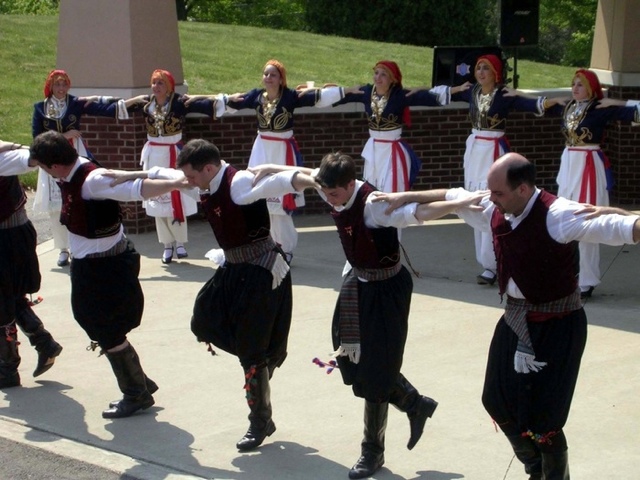 The actor was awarded this title in the 90s. By the way, there were about 4-5 films in his career, including Zorba the Greek, in which he played the role of a Greek.
The actor was awarded this title in the 90s. By the way, there were about 4-5 films in his career, including Zorba the Greek, in which he played the role of a Greek. - Mikis Theodorakis, the author of sirtaki music, also got a lot of honors. So, the government of the USSR presented him with the Order of Lenin. By the way, many residents of the post-Soviet space fondly remember sirtaki and participation in its group performance.
- In one of the interviews, when asked about the origin of sirtaki, Michalis Kakoyannis answered that Quinn was simply too lazy to learn the choreography. He did not mention any broken leg.
- One of the admirers of sirtaki was Aristotle Onassis, a well-known Greek businessman and billionaire.
- In November 2011, the French took to Place Défense in Paris to perform sirtaki en masse and support the Greek population in difficult times.
- On August 31, 2012, more than 6,000 dancers gathered on the embankment of the Greek city of Volos.
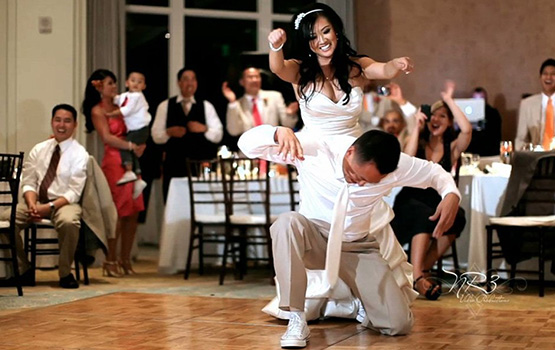 Their goal was to perform the longest sirtaki for the Guinness Book of Records. The collection of applications for participation continued for several months, and rehearsals lasted about 30 days. As a result, 5612 people participated in the synchronous sirtaki, which was recorded by the international Guinness committee. By the way, 1672 people were involved in setting the previous record. It happened in 2010 in Cyprus.
Their goal was to perform the longest sirtaki for the Guinness Book of Records. The collection of applications for participation continued for several months, and rehearsals lasted about 30 days. As a result, 5612 people participated in the synchronous sirtaki, which was recorded by the international Guinness committee. By the way, 1672 people were involved in setting the previous record. It happened in 2010 in Cyprus. - A very negative attitude towards sirtaki has developed in Peru. The melody of the dance here is firmly associated with the leader of the Shining Path organization, Abimael Guzman. At one of the meetings, he performed the famous Greek dance, which brought the negative of the Peruvians to the style.
- The sirtaki is also called the Zorba dance, in honor of the main character of the film, as well as the dance of friendship due to the atmosphere of unity on stage.
- In 1967, the musical film Sirtaki was released in Greece. The tape is filled with love, romance and the desire to enjoy life, no matter what - that is typical for the dance itself.
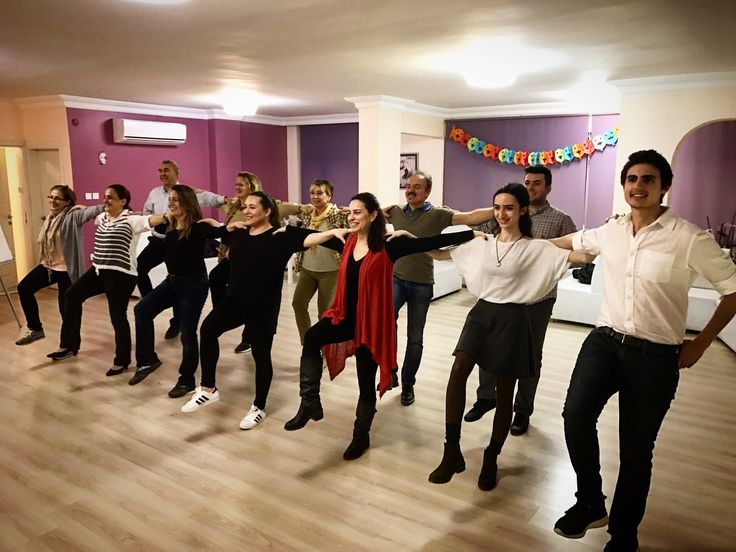
- Greek dance ensembles perform sirtaki in national costumes - chitons.
The best music to perform sirtaki
This is definitely Zorba's Dance Mikis Theodorakis. It is simply impossible to imagine a style without this musical accompaniment with an increasing tempo. Before writing the unofficial anthem of Greece, Mikis had to go through the Second World War and endure all the torture of the Nazis, being in captivity.
The cruelty and heartlessness of the Germans did not break the friendly spirit of the young self-taught musician. After the war, he graduated from the Athens Conservatory and began to create. The main source of inspiration for Mikis was the musical culture of Crete. It was under her influence that he composes music for Zorba. The composer himself does not see anything remarkable in the melody, although he notes that it has a zest.
Zorba dance (listen)
Mikis introduced fashion not only for sirtaki, but also for bouzouki.